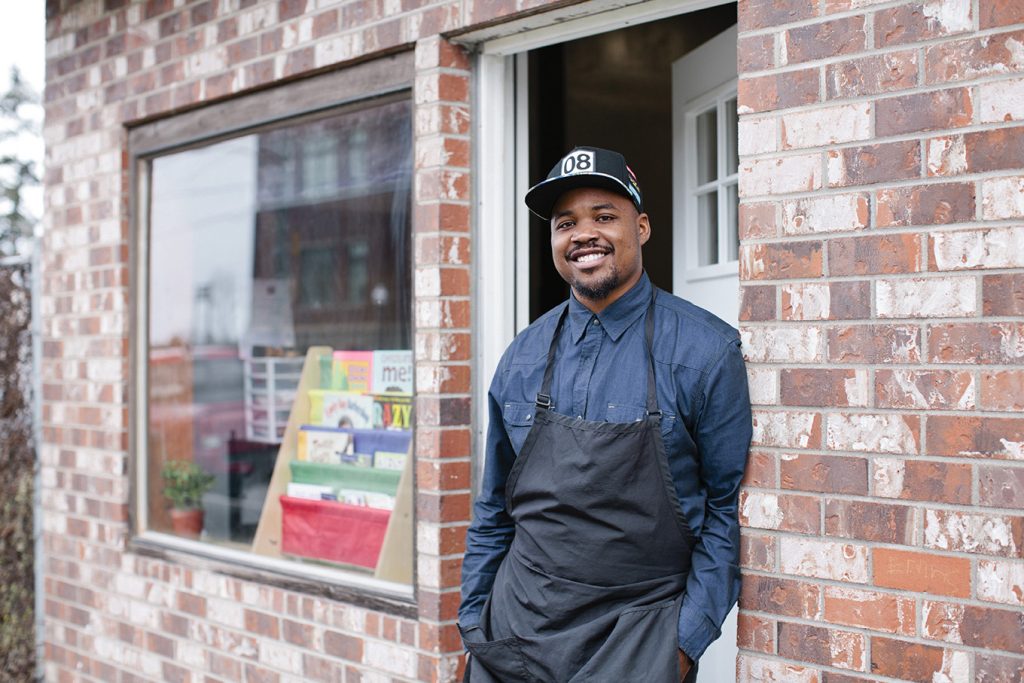Below is a summary of our article on collective impact and community authority appearing in the winter 2019 issue of the Stanford Social Innovation Review.
The story of StriveTogether began on a bridge.
In August 2006, leaders from three communities met in the middle of the Newport South Bank Bridge, known locally as the Purple People Bridge, which spans the Ohio River between Cincinnati, Ohio, and northern Kentucky.
I was there as the event kicked off a regional partnership to improve outcomes for kids. It was amazing to see so many different people — school district leaders and college presidents, foundation and nonprofit executive directors, corporate CEOs and elected officials — come together. After that symbolic launch, we quickly got to work on an approach that would eventually become known as collective impact. Using this approach, we organized everyone around a common vision, focused on community assets instead of deficits and used data as a tool for collaboration.
That cross-sector effort still exists today and is known as StrivePartnership. And StriveTogether, started by several of the original leaders, including myself, now supports 70 communities across the country with the mission of helping 10.5 million kids succeed.
Over the years, we’ve revised and evolved our approach, distinguishing our own brand of quality collective impact. We’ve done this a few times based on lessons from partnerships in the StriveTogether Cradle to Career Network. So many systems impact young people from cradle to career, and our job is to make them all work better together. That’s why our new strategic plan has the goal of helping 24 communities strengthen and align the multitude of systems — like education, health care, housing and transportation — that shape opportunity for kids in America.
To close persistent gaps and get truly better results for kids, we recognize the critical role of community engagement in achieving equity. We’ve always known its importance. After all, it’s the first guiding principle in the StriveTogether Theory of Action, the framework for our approach. But acknowledging the full value of the community has taken us longer than I sometimes like to admit.
Here are three key insights for moving this work forward.

Dominique Ervin of Ervin’s Barbershop is one of 13 Tacoma, Wash., barbers participating in Graduate Tacoma’s Early Learning and Reading Network. The Books to Barbershops program taps into business-to-community connections by getting books into the hands of young boys of color.
Set community authority as an ongoing priority. At StriveTogether, we have emphasized equity and community voice by updating our Theory of Action and by making funding dependent on these goals through our Cradle to Career Community Challenge initiative. Across the Cradle to Career Network, partnerships are finding ways to activate community authority. Seeding Success, our Network member in Memphis and Shelby County, Tenn., has gone from sharing data findings with the community to helping other organizations collect and analyze data to make better decisions. Through these efforts, a Seeding Success partner reduced chronic absence rates at 15 schools by 27 percent.
Become an expert — at not always being the expert. In 2016, Cincinnati voters approved spending $15 million on quality preschool for 6,000 kids. This followed a campaign supported by StrivePartnership but led by community members including education advocates, preschool providers and faith leaders. Cradle to Career Network members also tap into community expertise by adding staff positions and diverse leadership. The Road Map Project, in South Seattle and South King County, Wash., replaced its advisory board with a leadership team that better represents students and parents in the area. Youth and community leaders now work alongside institutional leaders from the original group to advance racial equity.
Make room for the power of authentic community. In Bellevue, Wash., Cradle to Career Network member Eastside Pathways supported a project to train Hispanic community members as liaisons between families and local organizations. This initiative filled such a vital need that an organization formed to keep it going. In countless communities, grassroots groups — many with smaller budgets and people of color in charge — are fighting for racial equity and upward mobility. We have a lot to learn from the lived experience of these community pillars. As we continue seeking their expertise, we also must recognize and champion the power of the community in deciding their own destinies.
At our 2018 Cradle to Career Network Convening, partnerships across the country shared examples of how they are centering the voices of parents and students in their work. It’s been a month since our event and I’m still reflecting on how we can build on this momentum in our quest to end inequity and injustice.
A truly shared community vision — another hallmark of the StriveTogether approach — means shared power with those closest to the problems we’re trying to solve. Our commitment to the power of community authority must be backed by our actions every day. As spoken word poet Christian Paige said during a performance at our 2018 convening, a fully united community — with all voices valued — is unstoppable.
To read the full article that appeared in the Stanford Social Innovation Review, co-authored with StrivePartnership, click here.






